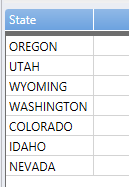

- #KUSTO SUMMARIZE HOW TO#
- #KUSTO SUMMARIZE CODE#
#KUSTO SUMMARIZE HOW TO#
This is just an example of how to query table data in Azure Data Explorer with Kusto to analyse load test results. The result shows that the requirement which the processing time between device and storage should be less than 10 seconds. The average is about 5,023 milliseconds which means 5.023 seconds. Here is the result of the Kusto queries explained ealier. Null values, a null bin size, or a negative bin size will result in null. If you have a scattered set of values, theyll be grouped into a smaller set of specific values. Used frequently in combination with summarize by. percentiles : Returns the percentile approximate of the group Rounds values down to an integer multiple of a given bin size.min : Returns the minimum value across the group.max : Returns the maximum value across the group.
 avg : Returns an average value across the group. 'summarize' is an operator to produce a table that aggregates the content of the input table.Īs an example, the following four aggregation functions are used. Here is an example of Kusto queries to calculate processing time between device and table storage.Įnter fullscreen mode Exit fullscreen mode Kusto queries to calculate processing time These timestamp data will be used to calculate processing time between device and table storage. Column Timestamp is the time when telemetry message is ingested into Table Storage after processing it with Function App. Timestamp in column Data is the time when telemetry message is sent from each device. It is assumed that there are around 1.2 million entities adding into a single table. Let's see how an example table data looks like. The purpose of querying the table data here is to make sure that one of the requirements, the processing time between device and storage is less than 10 seconds, is met. In this article, I will use an example from the post "Cost comparison between Azure services to determine architecture" to illustrate how to query Table data with Kusto. Once done with the steps above, you're ready to query data ingested from Azure Table Storage with Kusto. Please refer to the post "Ingest data from Azure Table Storage into Data Explorer". Kusto queries to calculate processing timeįirst of all, you need to complete the steps to ingest data from Table Storage into Data Explorer via Data Factory to prepare to query large numbers of entities with Kusto. In this article, how to query with Kusto in Azure Data Explorer (ADX) will be explained in particular. LINQ has an upper limit of 1000, while Data Explorer with Kusto allows to query large numbers of entities. *Entities are sets of properties and can be thought of like rows in a database.
avg : Returns an average value across the group. 'summarize' is an operator to produce a table that aggregates the content of the input table.Īs an example, the following four aggregation functions are used. Here is an example of Kusto queries to calculate processing time between device and table storage.Įnter fullscreen mode Exit fullscreen mode Kusto queries to calculate processing time These timestamp data will be used to calculate processing time between device and table storage. Column Timestamp is the time when telemetry message is ingested into Table Storage after processing it with Function App. Timestamp in column Data is the time when telemetry message is sent from each device. It is assumed that there are around 1.2 million entities adding into a single table. Let's see how an example table data looks like. The purpose of querying the table data here is to make sure that one of the requirements, the processing time between device and storage is less than 10 seconds, is met. In this article, I will use an example from the post "Cost comparison between Azure services to determine architecture" to illustrate how to query Table data with Kusto. Once done with the steps above, you're ready to query data ingested from Azure Table Storage with Kusto. Please refer to the post "Ingest data from Azure Table Storage into Data Explorer". Kusto queries to calculate processing timeįirst of all, you need to complete the steps to ingest data from Table Storage into Data Explorer via Data Factory to prepare to query large numbers of entities with Kusto. In this article, how to query with Kusto in Azure Data Explorer (ADX) will be explained in particular. LINQ has an upper limit of 1000, while Data Explorer with Kusto allows to query large numbers of entities. *Entities are sets of properties and can be thought of like rows in a database. #KUSTO SUMMARIZE CODE#
Since the maximum number of entities* that are returned in a single query with LINQ Take operator is 1,000 ( Ref - Returning the Top n Entities), you may need to code more to retrieve what you want.

There are situations where we want to query Table data, such as analysing load test results.







 0 kommentar(er)
0 kommentar(er)
